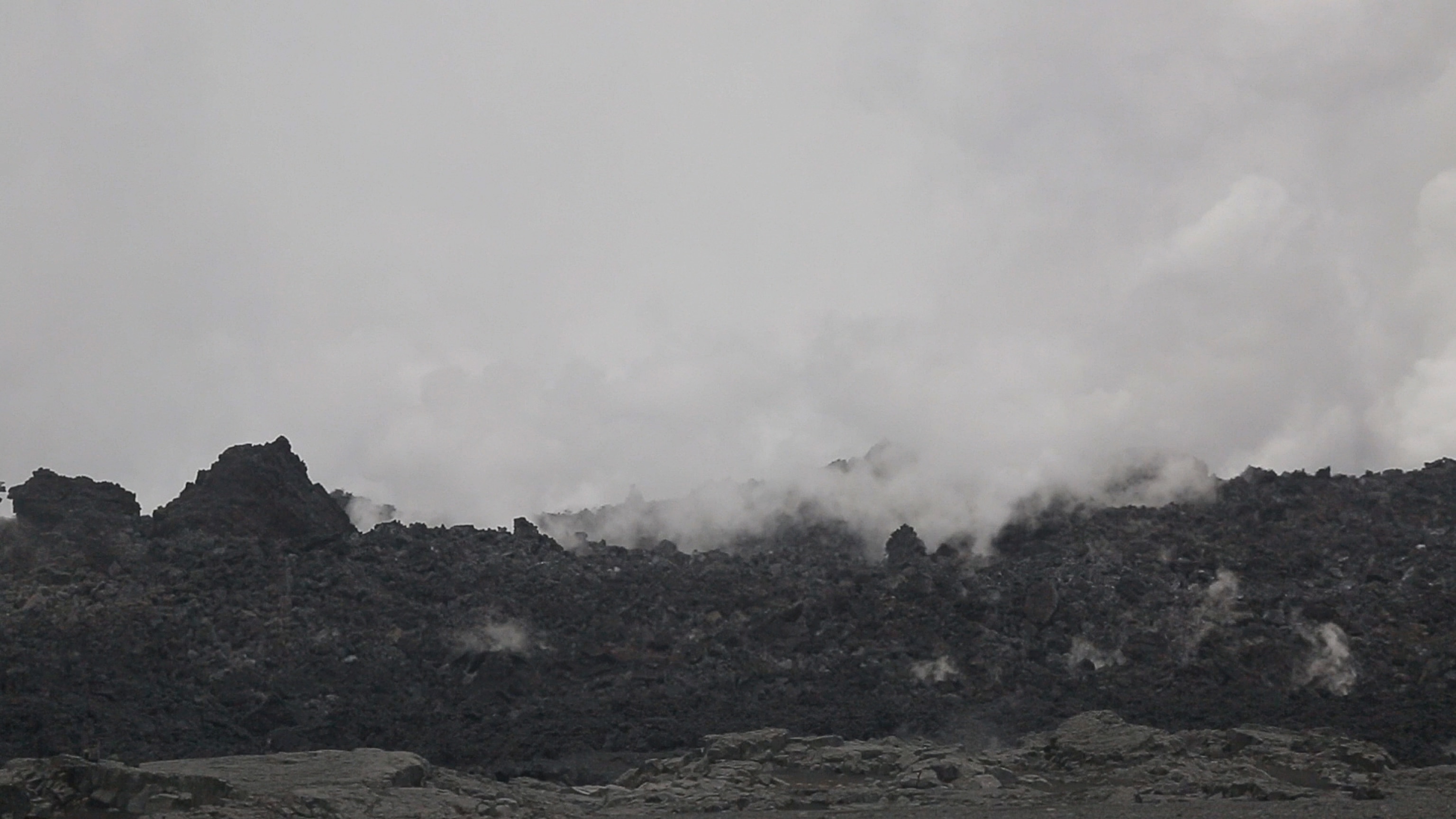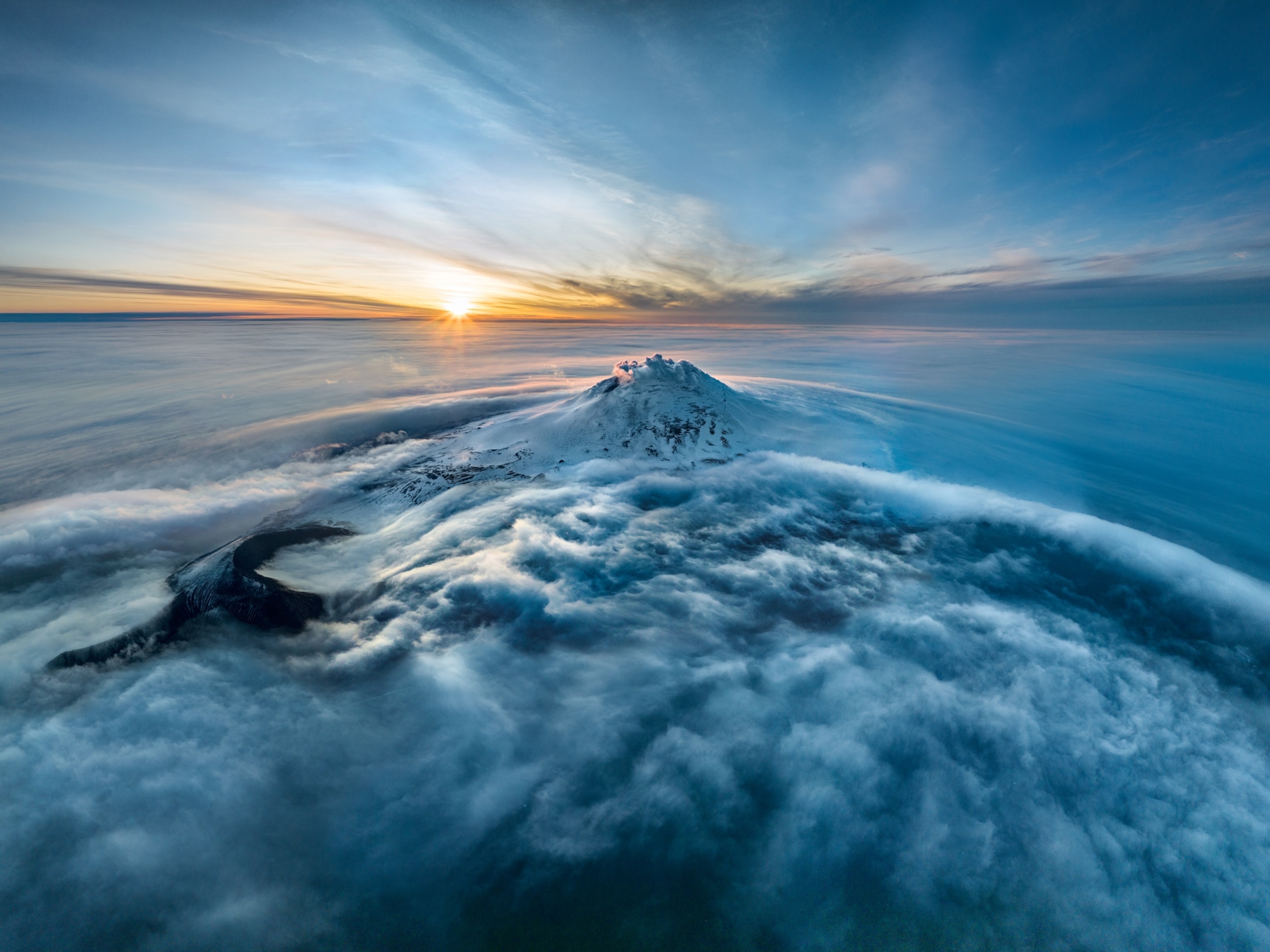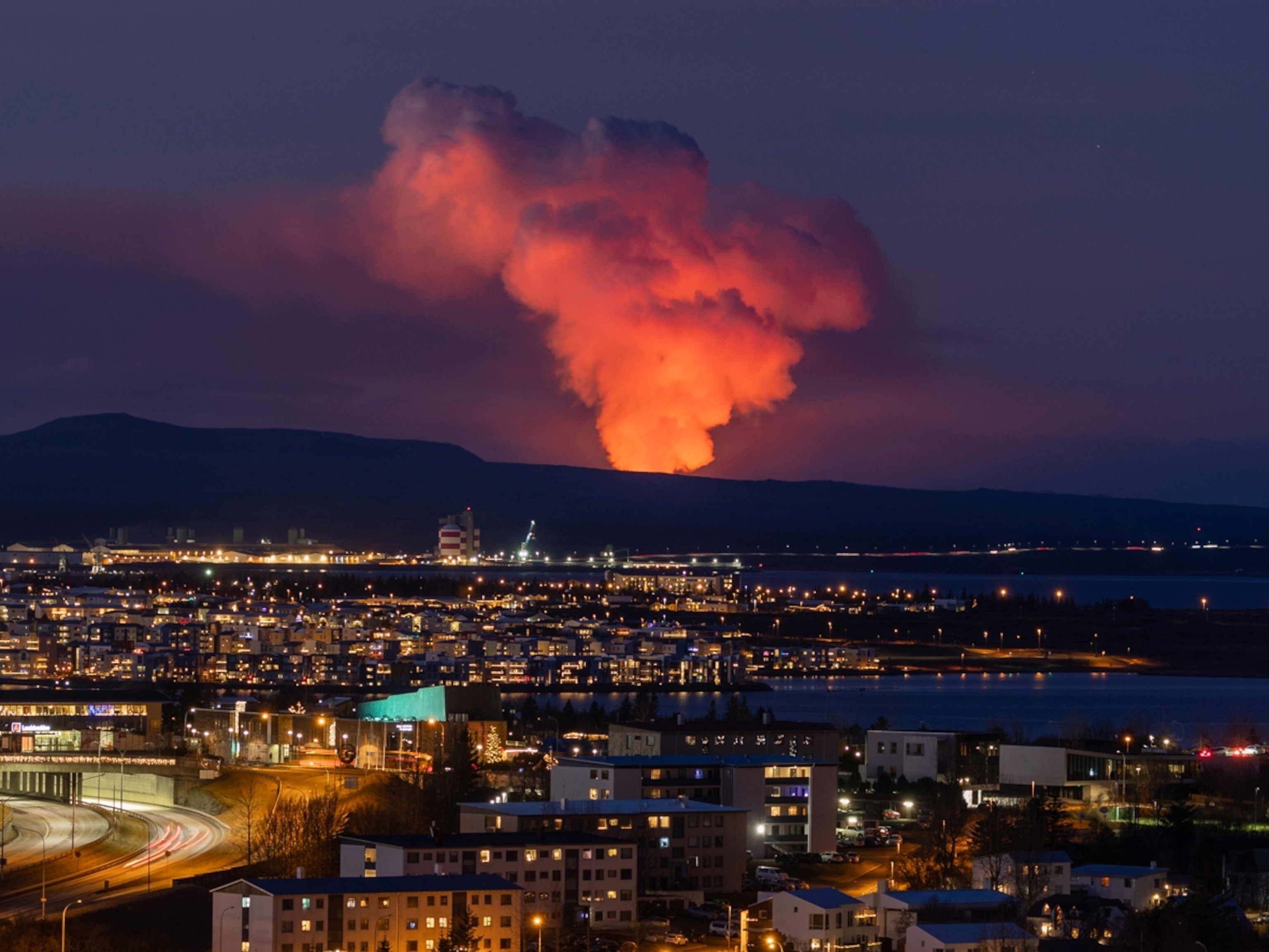The Logistical Nightmare of Visiting a Volcano
I never imagined how difficult it would be to get to a volcanic eruption. It’s not like I pictured a curious herd of people just strolling up to take a look, but I neglected to consider the logistical cartwheels it would take to get permission to visit the Holuhraun fissure in Iceland. The eruption stemmed from the Bárðarbunga volcano and there were fluctuating levels of dangerous gas, the possibility of ice melting in amounts large enough to cause a flood, and of course, a spew of red hot lava.

Most of the videos I work on for my job as a video producer at National Geographic News are short documentaries created specifically for the Internet. I travelled to Iceland with photo editor Becky Harlan to produce three of these videos. One piece was about Futurevolc, a European collaborative research project bringing together specialists to better understand volcanic systems, openly share data, and provide early warnings before significant events. As luck would have it, a few days after pitching the initial idea, the volcano Bárðarbunga began to stir. The story about a volcano research community shifted to include an eruption from the second tallest mountain on the island.
But you can’t just pop on over to the site. You need a permit from the Civil Protection agency, a local guide, a four-wheel drive, and during the days we could be there, gas masks and gas monitoring tools. The original day we planned on going was cancelled based on gas levels being too high. After weeks of phone calls and emails from D.C., we arrived in Iceland to spend days mixed with video shoots, phone calls, emails, and visits, trying to fit together all of the pieces of the puzzle.


Physically getting to the site can also be a process, it’s in the middle of Iceland’s rugged highlands, and you need someone who knows the way. A few hours into our drive, after letting out air from our tires to help with the bumpy ride, we were stopped at a checkpoint two hours away from the eruption. The scientists we were following decided to go ahead without us to check the gas levels before opening the site up to the media. So we waited.

All you could see in every direction were rolling hills of earth. The wind was constant and only got stronger and colder as the day went on. We spent about five hours waiting at the checkpoint, as the day got later and later. An arctic fox appeared, amusing us all for a moment. But then we got word that no one was getting in. If we wanted any shot at being able to film, we’d have to come back at 5 am the next day. After more calls and workarounds we agreed on a sleep-deprived solution. We would come back tomorrow.

Our heads hit our guesthouse pillows after 1:00 a.m., and a couple of hours later at 3:30 a.m., we set off again. The whole way there felt like a tentative trek. We’d come a long way jumping through hoops and this was the last day to try. My mind was busy churning out backup plans. Anton, our guide, talked about the wind direction and what our escape routes would be if needed. He taught me more about how volcanoes worked and how some of the mountains in the park had formed. I was also trying to pay attention to what he told me about noticing the smells. I kept waiting for a hint of the gaseous odor, a burning in my nose or eyes that would signal sulfur dioxide. At one point it seemed like there was an absence of any scent, it just felt gray. I can’t ever remember being surrounded by so much gray. Gray was the only color that existed—the sky was gray, the rocks were gray, the smoke was gray and the mountains were a blackish gray. The world looked 2D. We drove through these quiet, isolated areas, what you would imagine an empty, rocky planet to look like.


When we got to the eruption it didn’t seem real, the orange-red contrasted against the lack of color surrounding it. I could hear it growl and feel the vibrations. It was strange to look at something so hot it could swallow up our four-wheeled-drive vehicle, yet feel so cold while watching it. I guess I somehow thought that I would feel the heat from the lava, even from a distance.

On the drive back I felt a mixture of exhaustion, relief, and disbelief. My body was still sore from filming on horseback for 10 hours a few days before and the hike to a magma chamber coming up the next morning reminded me that I wasn’t done. I easily accept and adapt to strange situations though I knew what I saw wasn’t going to fully sink in until I looked at the footage later. But maybe these things will always feel both surreal and oddly normal with a sense of victory for just getting there at all.
Read more about the Holuhraun eruption and the team of scientists studying it on National Geographic News.
See more videos from National Geographic News here.
You May Also Like
Go Further
Animals
- How can we protect grizzlies from their biggest threat—trains?How can we protect grizzlies from their biggest threat—trains?
- This ‘saber-toothed’ salmon wasn’t quite what we thoughtThis ‘saber-toothed’ salmon wasn’t quite what we thought
- Why this rhino-zebra friendship makes perfect senseWhy this rhino-zebra friendship makes perfect sense
- When did bioluminescence evolve? It’s older than we thought.When did bioluminescence evolve? It’s older than we thought.
- Soy, skim … spider. Are any of these technically milk?Soy, skim … spider. Are any of these technically milk?
Environment
- Are the Great Lakes the key to solving America’s emissions conundrum?Are the Great Lakes the key to solving America’s emissions conundrum?
- The world’s historic sites face climate change. Can Petra lead the way?The world’s historic sites face climate change. Can Petra lead the way?
- This pristine piece of the Amazon shows nature’s resilienceThis pristine piece of the Amazon shows nature’s resilience
- Listen to 30 years of climate change transformed into haunting musicListen to 30 years of climate change transformed into haunting music
History & Culture
- Meet the original members of the tortured poets departmentMeet the original members of the tortured poets department
- Séances at the White House? Why these first ladies turned to the occultSéances at the White House? Why these first ladies turned to the occult
- Gambling is everywhere now. When is that a problem?Gambling is everywhere now. When is that a problem?
- Beauty is pain—at least it was in 17th-century SpainBeauty is pain—at least it was in 17th-century Spain
Science
- Here's how astronomers found one of the rarest phenomenons in spaceHere's how astronomers found one of the rarest phenomenons in space
- Not an extrovert or introvert? There’s a word for that.Not an extrovert or introvert? There’s a word for that.
- NASA has a plan to clean up space junk—but is going green enough?NASA has a plan to clean up space junk—but is going green enough?
- Soy, skim … spider. Are any of these technically milk?Soy, skim … spider. Are any of these technically milk?
Travel
- Dina Macki on Omani cuisine and Zanzibari flavoursDina Macki on Omani cuisine and Zanzibari flavours
- How to see Mexico's Baja California beyond the beachesHow to see Mexico's Baja California beyond the beaches
- Could Mexico's Chepe Express be the ultimate slow rail adventure?Could Mexico's Chepe Express be the ultimate slow rail adventure?




